A classic treat for Dragon boat festival. With this informative recipe, you will make sweet and savoury Zongzi, Chinese sticky rice dumplings, with great ease.

Jump to:
What is Zongzi
Zongzi (粽子, Chinese sticky rice dumpling) is a traditional food for celebrating Duanwu festival (端午节, aka Dragon boat festival) which is on the fifth day of the fifth month of the Chinese lunar calendar (The exact date varies on a regular calendar each year).
The Dragon Boat Race isn’t a tradition in the North-west of China where I grew up. But Zongzi is definitely an indispensable delicacy that makes this festival very attractive and special.
Zongzi is basically glutinous rice with sweet or savoury fillings wrapped in bamboo or reed leaves. After being cooked in water, all the ingredients stick together and stay in a particular shape when unwrapped.
It’s a sticky, aromatic and flavoursome treat that involves some very specific preparation. But it’s worth every bit of effort as it tastes so good!
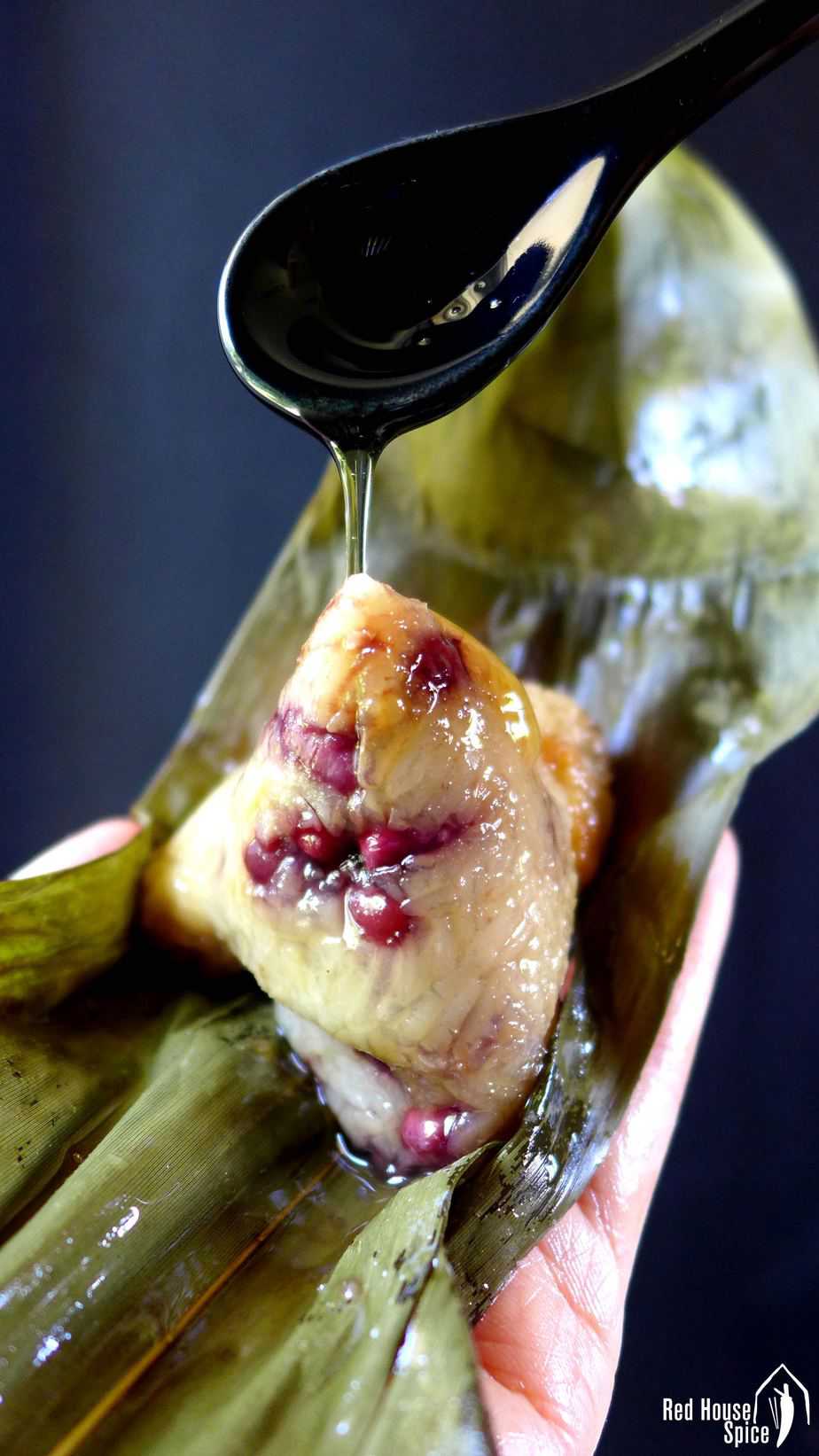
A person memory
I felt extremely homesick when I was preparing and shooting Zongzi for this post. The strong aroma that lingered in my kitchen for hours brought me back to those good old days. Thanks to my mum and dad who always involved me in the kitchen, I had many sweet childhood memories about Zongzi.
I remember on those early summer days right before Duanwu festival, my mum would ask me and my brother to collect Ma Lian (马莲, a type of long, tough grass used to tie the Zongzi instead of strings) in the nearby field. We were then given the opportunity to wrap the Zongzi.
It was very tricky for young children and most of the time we ended up with broken leaves and spilt rice. But my parents always acknowledged our effort and encouraged us to try again and again. We often didn’t have that patience to stay right to the end of the preparation, but we got our hands wet and had lots of fun.
I remember how much I loved the aroma coming from the pot in which the Zongzi was boiled. It was so nice and memorable! I also remember how comforting it was to have a cold Zongzi as a snack after a tiring day in school.

Two varieties: sweet & savoury
There is a large variety of Zongzi across China. They differ in size, shape and filling. Growing up with sweet Zongzi stuffed with red beans and/or Chinese dates, I encountered culture shock the first time I heard of savoury ones.
Having meat as the main filling is very popular in the southern regions of China such as Shanghai, Canton, etc. You may also find them filled with salted egg yolks, chestnuts, dried shrimp, etc.
Obviously sweet and savoury Zongzi are very different in taste, but I think they are equally delicious! That’s why I’d like to introduce both versions in this post.
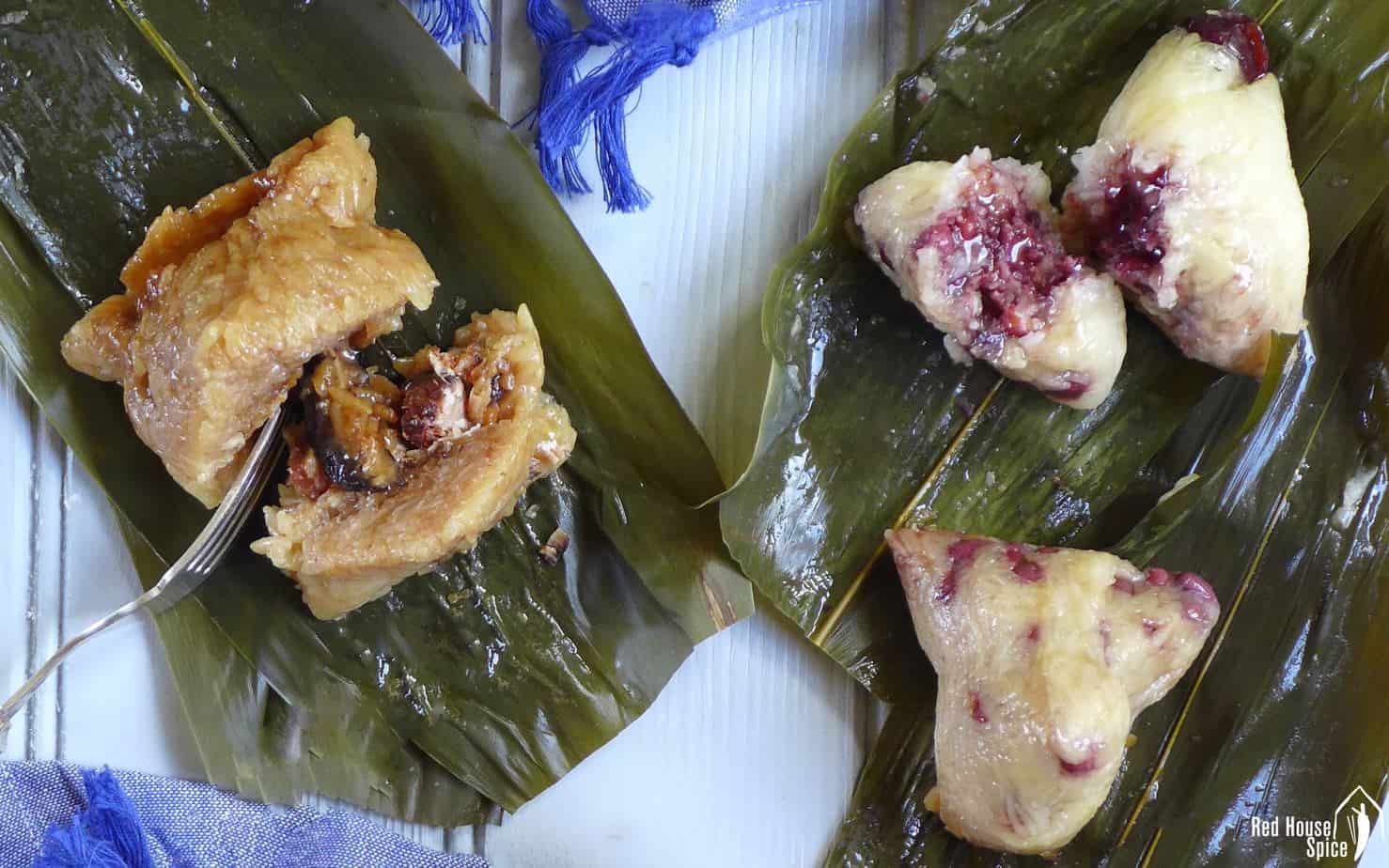
Sweet Zongzi with red beans
Red beans (aka adzuki beans) are widely used in Northern-style sweet Zongzi. In my recipe I put red bean paste in the middle (a sweet surprise when cut open) then sprinkle whole red beans on top of the rice (a nice look and bite on the surface).
I also like putting a Chinese date in each Zongzi to add a different sweet taste. In fact, you can be flexible and creative with the filling. For example, mung beans and dry fruits work well too. Just remember to soak hard ingredients like beans overnight beforehand.
Usually, sweet Zongzi are served with either honey or sugar. It’s delicious both warm and cold.
In this post, I wrap sweet Zongzi into a triangle shape: it has four corners and four triangle sides. You need a minimum amount of bamboo leaves to make this shape: one wide leaf or two overlapped narrow ones for each Zongzi. It’s ideal for small Zongzi.
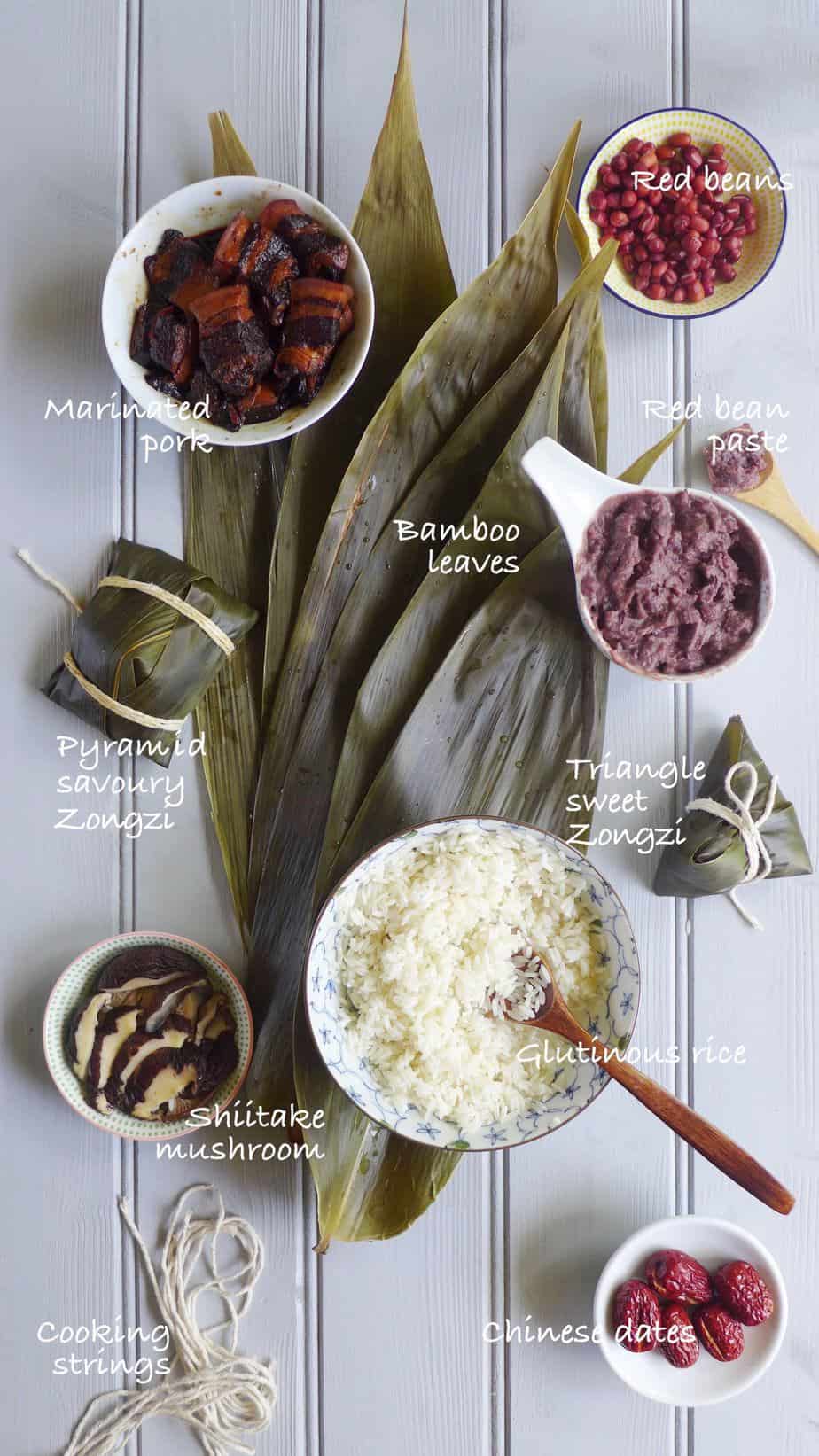
Savoury Zongzi with pork belly
The savoury version requires two fillings: marinated pork belly and shiitake mushrooms. After cooking, the flavour from the pork marinade penetrate into each grain of rice. The meat becomes so tender that it almost melts in your mouth. You may serve meaty Zongzi warm, as breakfast, snack or as a staple of a dinner.
I tried a different shape for the savoury ones. You need four bamboo leaves to wrap everything into a five-corner, pyramid shape. It’s bigger than the triangle ones and I find it easier to wrap. If you are new to wrapping Zongzi, I recommend that you start with this wrapping method.
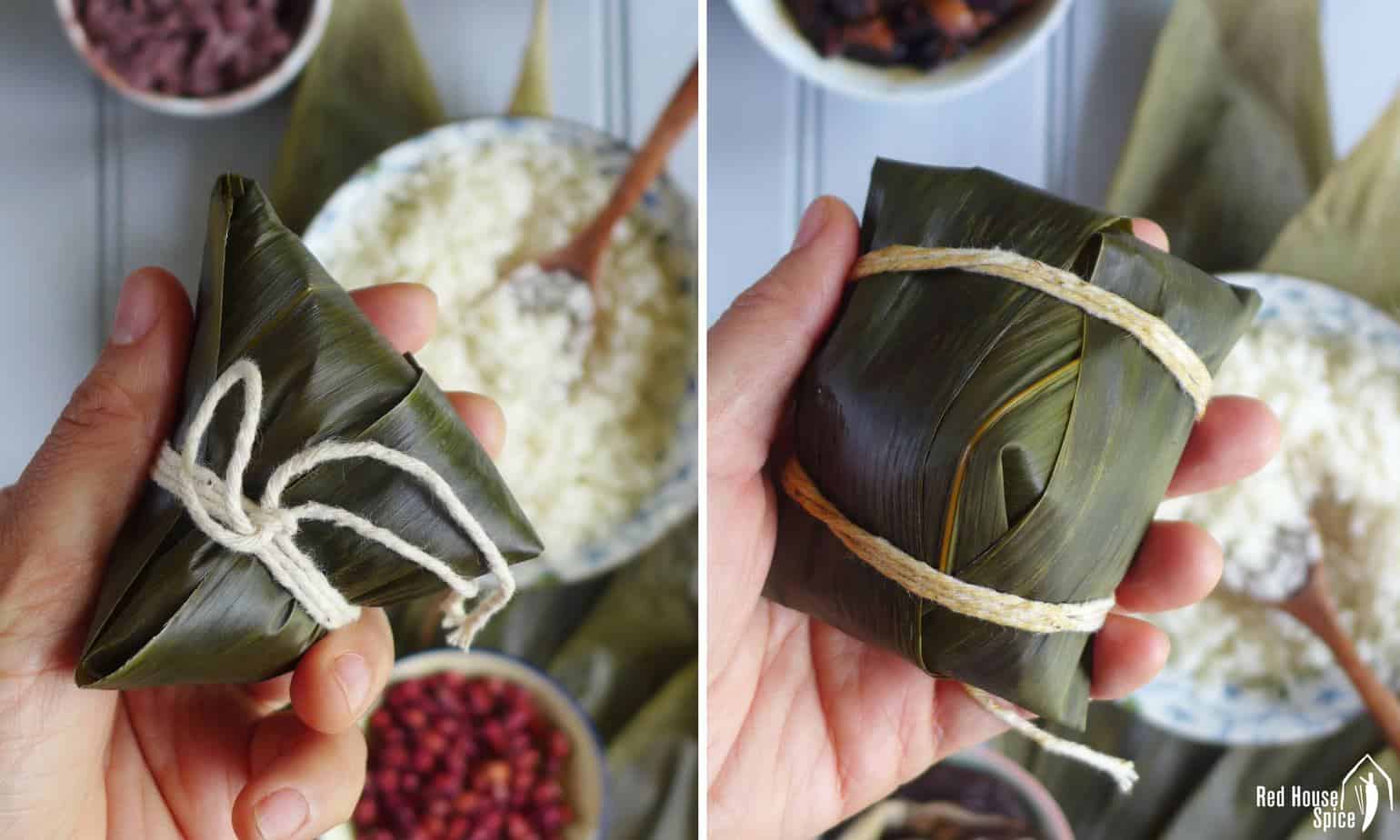
How to make Zongzi?
Step 1: Prepare the ingredients
This means to soak the hard-to-cook ingredients (rice, red beans) in water beforehand and to marinate the meat if you are making savoury ones.
I use dried bamboo leaves (widely available in Chinese/Asian shops) that need to be soaked too. They should be pliable when wrapping.
Step 2: Assemble and wrap
This is probably the most intimidating part. Actually it’s not that hard at all (please see my detailed instructions below). I think the key point is to be patient. Take your time and do not rush.
Step 3: Cook the Zongzi
They need to be boiled in water for about 2.5 hours. You should place a heavy plate on top of the Zongzi to stop them floating (my mum used to put a flat stone instead). Don’t forget to check the water level from time to time. Top up to ensure the Zongzi are always underwater.
PS: My mum used to boil some eggs with the Zongzi. The aroma from bamboo leaves makes them super tasty. It’s a bonus!
🛎 The Alkaline Version: In southern regions of China, yellow-coloured Alkaline Zongzi (碱水粽) is very popular. To make this version, add 1 tablespoon of lye water (Kansui) to the soaked glutinous rice (weigh 600g/21oz before soaking). Follow other instructions as usual.
Two ways to wrap
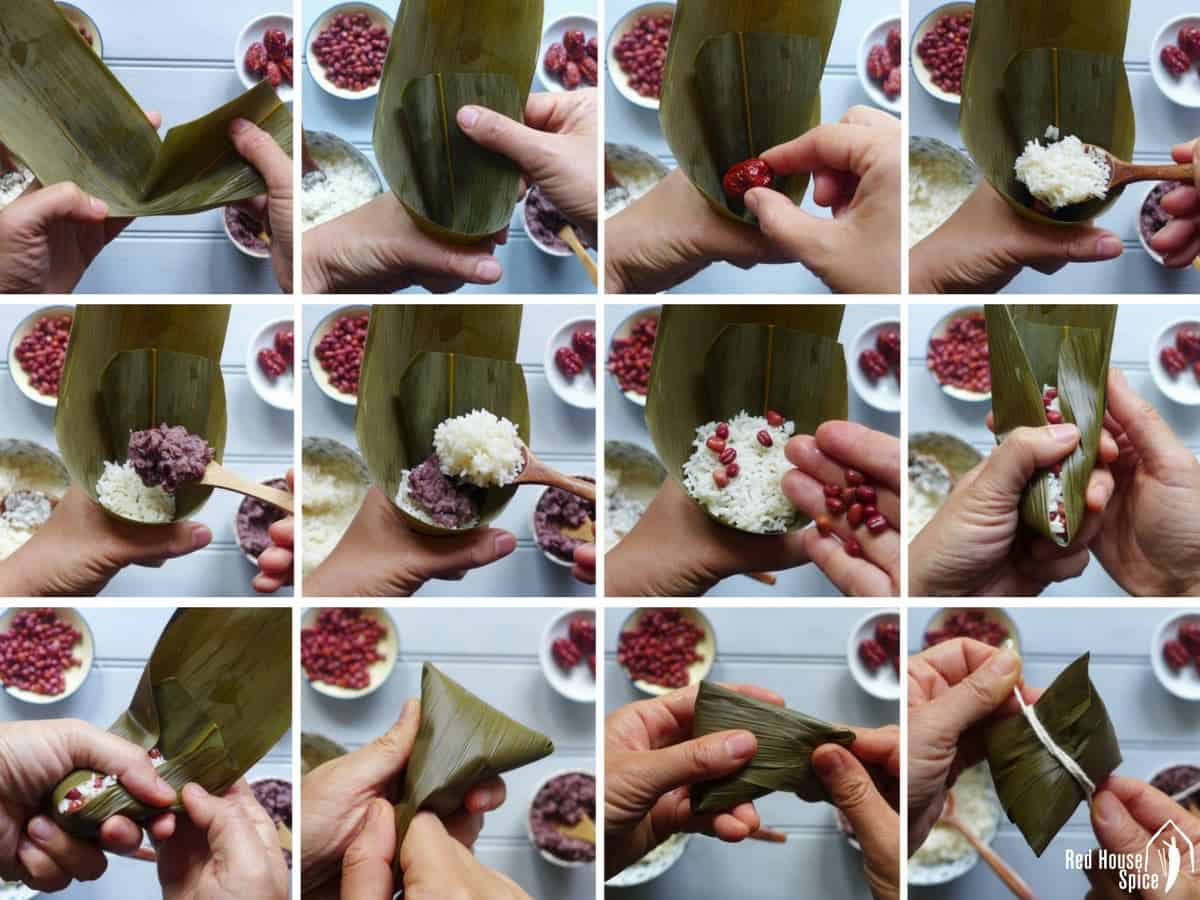
Triangle shape
- Use one wide bamboo leaf (or two overlapped narrow ones) to form a narrow cone.
- Place some glutinous rice in, then the filling.
- Top with more rice and make it level.
- Fold the two sides of the leaf over the rice.
- Then fold the top of the leaf down to cover the rice completely.
- Wrap the rest of the leaf around the shape. Tie with a cooking string.
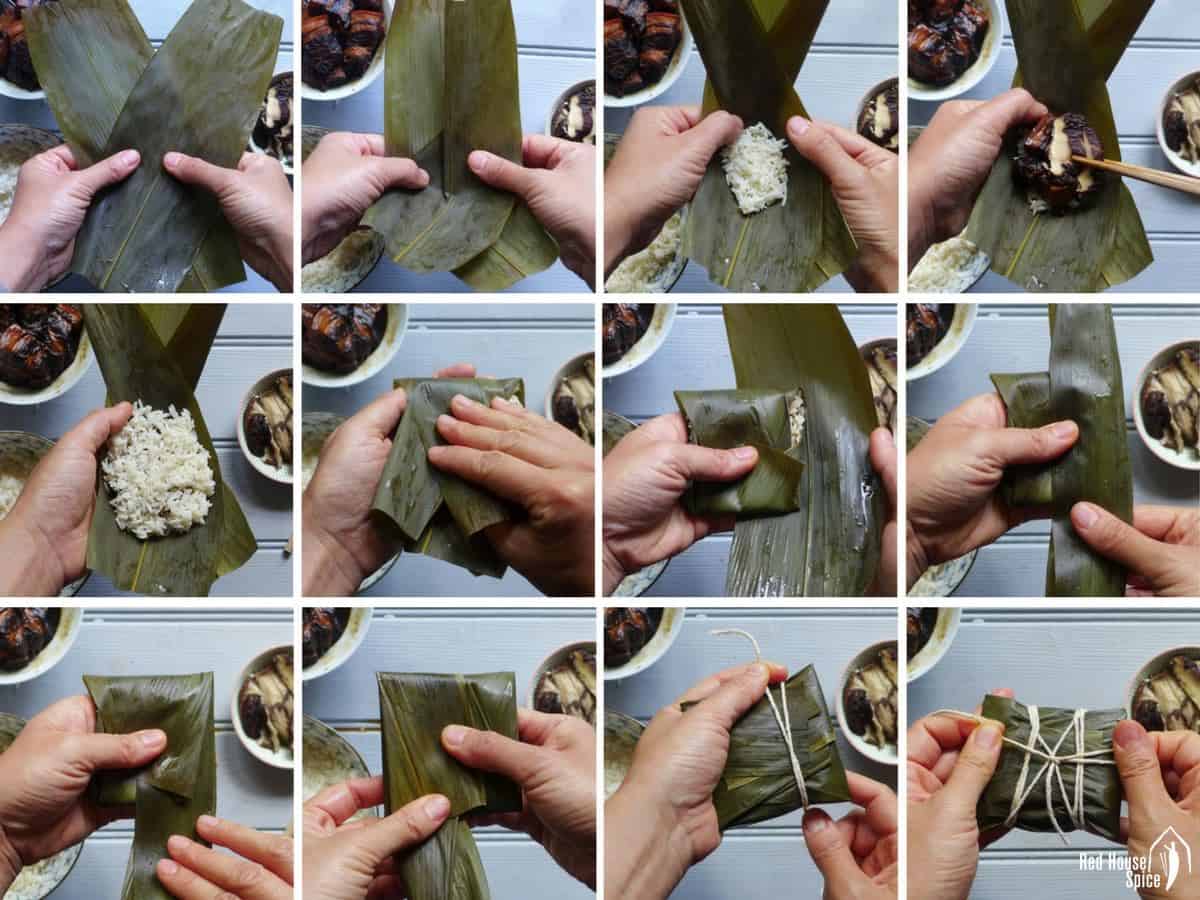
Pyramid shape
- Overlap two leaves like an X. Form a wide cone in the middle.
- Place some glutinous rice in, then the filling.
- Top with more rice and make it level.
- Fold two ends of the leaves towards the middle.
- Then use another two leaves to seal two sides.
- Tie with a cooking string (opposite direction of the last two leaves).
Other sticky rice recipes
Looking for more ideas to cook with glutinous rice? Check out these recipes:
📋 Recipe
Love this recipe? Please leave a 5-star 🌟🌟🌟🌟🌟 rating in the recipe card below & if you REALLY like it, consider leaving a comment as well!
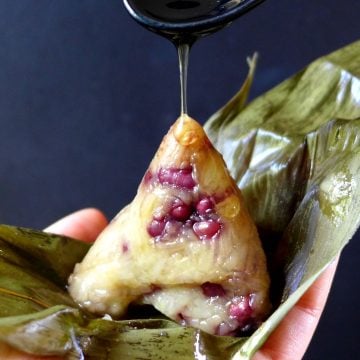
Zongzi: Chinese sticky rice dumpling (粽子)
Ingredients
For the sweet Zongzi made in triangle shape
- 600 g glutinous rice - 21oz
- 4 tablespoon red bean paste - aka adzuki bean paste
- 4 tablespoon red bean - aka adzuki beans
- 12 Chinese dates - pitted
- 12-24 bamboo leaves - two ends trimmed
- 12 cooking strings - 70cm/27inch each
- Honey or sugar - for serving, optional
For the savoury Zongzi in pyramid shape
- 600 g glutinous rice - 21oz
- 6 shiitake mushrooms
- 200 g pork belly - cut into chunks
- 2 tablespoon light soy sauce
- 1 tablespoon dark soy sauce
- 1 tablespoon Shaoxing rice wine
- ¼ teaspoon Chinese five-spice powder
- 1 pinch white pepper
- 1 pinch salt
- 1 pinch sugar
- 1 teaspoon ginger - minced
- 48 bamboo leaves - two ends trimmed
- 12 cooking strings - 125cm/50 inch each
Instructions
For the sweet Zongzi
- Prepare: Soak glutinous rice, red beans and bamboo leaves in water overnight.
- Assemble (triangle shape): Use one wide bamboo leaf (or two overlapped narrow ones) to form a narrow cone. First, place a date in the cone, then some glutinous rice. Add a tablespoon of red bean paste. Top with more rice and whole red beans. Fold the two sides of the leaf over the rice. Then fold the top of the leaf down to cover the rice completely. Wrap the rest of the leaf around the shape. Tie with a cooking string. Please refer to the video below.
- Cook: Place Zongzi in a pot (ideally small enough to let them snuggle). Fill the pot with water completely covering the Zongzi. Place a heavy plate on top. Bring the water to a boil then leave to simmer for 2.5 hours (check the water level from time to time. Top up to ensure the Zongzi are always underwater).
- Serve: Equally delicious both warm and cold. Dip into sugar or honey for a sweeter taste if you wish.
For the savoury Zongzi
- Prepare: Soak glutinous rice, shiitake mushrooms and bamboo leaves in water overnight. Marinate the pork with the rest of the ingredients overnight.
- Assemble (pyramid shape): Overlap two leaves like an X. Form a wide cone in the middle. Place some glutinous rice in, then the pork and mushroom. Top with more rice and make it level. Fold two ends of the leaves towards the middle. Then use another two leaves to seal two sides. Tie with a cooking string (opposite direction of the last two leaves). Please refer to the video below.
- Cook: Same as cooking sweet Zongzi (see above).
- Serve: Best to serve warm.
Video
NOTES
NUTRITION
NUTRITION DISCLOSURE: Nutritional information on this website is provided as a courtesy to readers. It should be considered estimates. Please use your own brand nutritional values or your preferred nutrition calculator to double check against our estimates.
I had great pleasure in making these Zongzi and writing this post. It reminds me of where I come from and what is important in life. I’d love to take this opportunity to say THANK YOU to my wonderful parents who filled my childhood with happy memories through food.



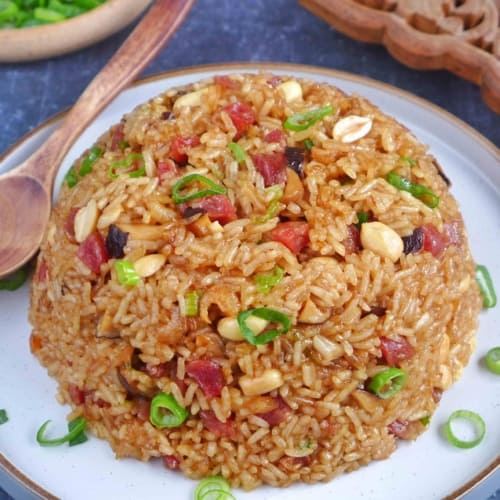
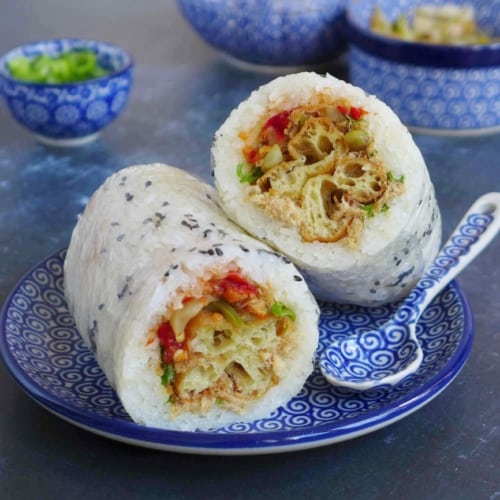
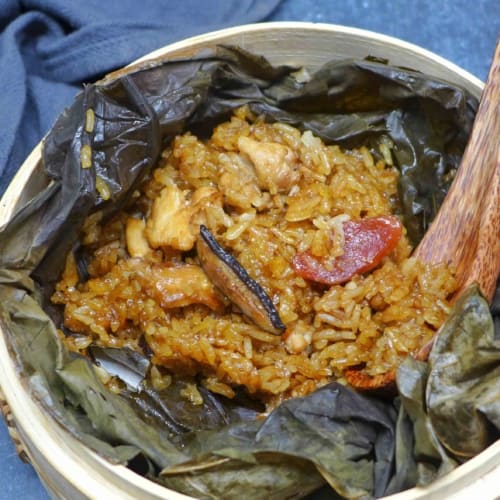
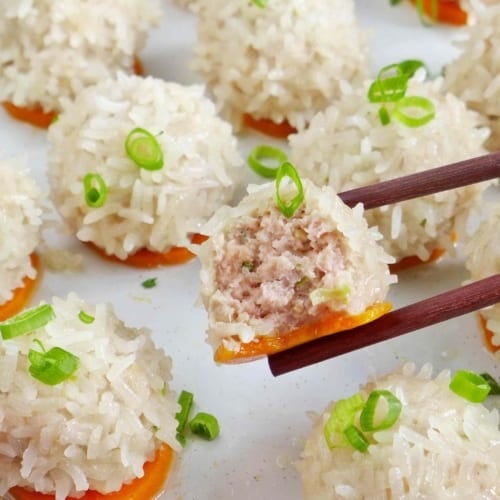
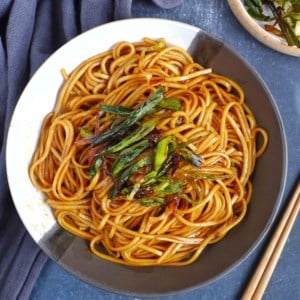
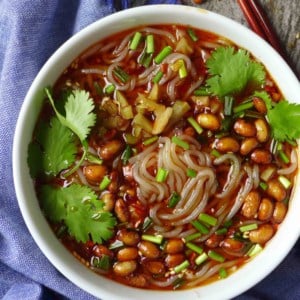
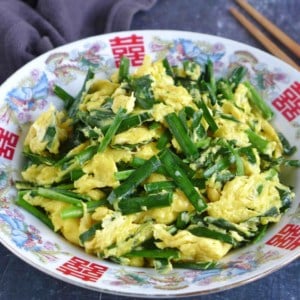
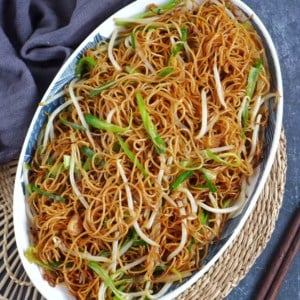
I grew up in Indonesia. We call Zongzi (the savoring ones) bacang, the sweet ones are called kuecang, made with lye water, so it is yellow. No filling, just plain sweet rice previously soaked in lye water, and they are eaten with granular sugar. They are not as popular as the savory one. The filling of the savory one is filled with pork (or chicken for those who prefer chicken). The pork is previously cooked, usually diced pork belly, shiitake mushroom, thin sliced Chinese sausages, often with boiled peanuts, and using the Indonesian sweet soy sauce. The boiled peanuts are only added in the sticky rice version. Very often instead of sticky rice, they are made with regular rice, previously cooked halfway. They are boiled for a very long time and then hang freely from the wires to dry clothes, so all the moisture drip and the bacang will be very compacted. They keep 2 days not refrigerated. The recipe includes garlic, sweet Indonesian soy sauce, light soy sauce, oyster sauce, garlic, shallots or onions, 5-spice power, chestnuts, dried shrimp, cooked until the cubed pork are very tender. Very often part of a boiled egg, or half of a salted duck egg yolk is also included. The wrapping used are bamboo leaves, with 3 points. I learned how to do the wrapping by opening a purchase bacang and repack it using the folds as the pattern, it worked! I can look for the recipe if anyone is interested–
Hi Wei, would black glutinous rice work for this? Also, I’ve been following your recipes for a while and I just read in another one of your posts that you’re from Lanzhou! That’s where my family is from! In fact, I was born there before immigrating to the US with my family at a young age 🙂
Welcome to my blog Kalyn! Yes, you can use black glutinous rice for sure. Hope you have had (or will have) a fun time exploring the delicious food in Lanzhou. I miss it very much!